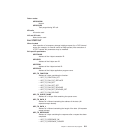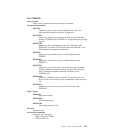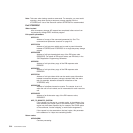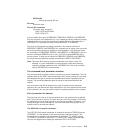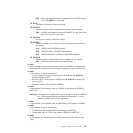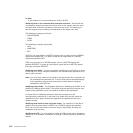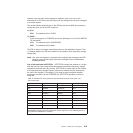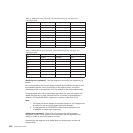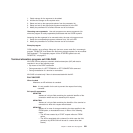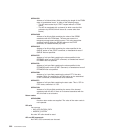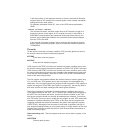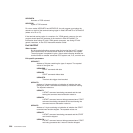
However, you can make minor changes to requests, such as to turn on the
existence bit for SYSID so that the request can be changed into one that is shipped
to a remote system.
The list that follows shows the bits in the EID that can be modified. Any attempt to
modify any other part of the EID is ignored.
TS_BITS1
X'02' The existence bit for SYSID.
TS_EIDOPT7
A user exit program at XTSEREQ can set the following on or off for all WRITEQ
TS commands:
X'10' The existence bit for NOSUSPEND.
X'08' The existence bit for MAIN.
The EID is reset to its original value before return to the application program. That
is, changes made to the EID are retained for the duration of the temporary storage
request only.
Note: Your user exit program is prevented from making major changes to the EID.
However, you must take great care when making the minor modifications
that are permitted.
Use of the task token UEPTSTOK: UEPTSTOK provides the address of a 4-byte
area that you can use to pass information between successive temporary storage
requests in the same task. (By contrast, UEPTQTOK is usable only for the duration
of a single temporary storage request, because its contents may be destroyed at
the end of the request.) For example, if you need to pass information between
successive invocations of the XTSEREQ exit, UEPTSTOK provides a means of
doing this.
Table 10. WRITEQ TS: User arguments and associated keywords, data types, and
input/output types
Argument Keyword Data type Input/output type
Arg1 QUEUE CHAR(8) input
Arg1 QNAME CHAR(16) input
Arg2 FROM DATA-AREA input
Arg3 LENGTH BIN(15) input
Arg4 * * *
Arg5 ITEM BIN(15) input/output
Arg5 NUMITEMS BIN(15) output
Arg6 * * *
Arg7 SYSID CHAR(4) input
Note: The different uses of Arg5 are shown, because Arg5 is used by the ITEM and
NUMITEMS keywords which are alternatives and the argument to the ITEM keyword is an
input field when REWRITE is specified.
Chapter 1. Global user exit programs 219



